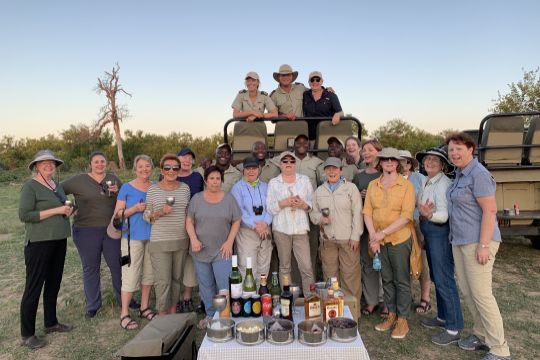|
African Safari Close encounters with wild, free and beautiful animals and birds in their natural habitat create the experience of a lifetime. There are a variety of different game-viewing venues and styles, for example on foot and in open-air vehicles, but no matter which option you choose, you'll have vivid memories that will stay with you the rest of your life. |
 Entering the English language in the late 19th century, the word safari means "long journey" in Swahili, originally from the Arabic "safra" meaning a journey. A safari is an overland journey. It usually refers to a trip to Africa, traditionally for a big-game hunt; today the term often refers to a trip taken to observe and photograph big game and other wildlife. There is a certain theme or style associated with the word, which includes khaki clothing, belted bush jackets and pith helmets.  Your wake-up call comes hours before the sun rises, so you can experience tracking nocturnal hunters such as leopard and lions when they're on the prowl, before the heat of the day kicks-in. After a quick cup of tea or coffee, you embark on a three- or four-hour game walk or drive with a super-knowledgeable ranger and tracker. During this time, you'll be able to take your greatest dream of spotting an animal in the wild and multiply it by a hundred. You see not just one elephant, but a dozen, from a playful baby to a two-story bull knocking over bushes with a shake of its head. Spot a regal gemsbok, with its slender, scimitar-like horns, and understand how they may have inspired tales of the fabled unicorn. The roar of a male lion, a few yards from the safari vehicle leaves you nearly breathless. The Big Five  Lions  Leopards  Elephants  Buffalo  Rhinoceros |
 The term "safari" also covers other adventurous journeys and expeditions, including whale watching safaris, Arctic safaris, eco-safari, etc. The best known safari areas in Africa are the Masai Mara and Serengeti in East Africa, Kruger National Park in South Africa, Etosha in Namibia, and the Okavango Delta and Chobe National Park in Botswana. The best known safari area in South Africa is Kruger National Park. Located in the northeast corner of the country, along the border with Mozambique, it covers 7,500 square miles and contains 16 distinct natural areas. Kruger National Park is a great location for "Big Five" viewing: lion, leopard, elephant, buffalo and rhinoceros, but also giraffes, zebras, antelopes, wildebeests and an amazing variety of birds.  Return to camp for freshly cooked breakfast followed by a nature walk with a ranger or a visit to a local village. After lunch, take a nap at the height of the midday heat or go for a swim. Then, following afternoon tea, you're off on an evening safari drive that includes a stop for a sundowner, a cocktail enjoyed as the sun sets. Back at your lodge, enjoy dinner under the southern constellations - a completely different array of stars from what you see at home. Then it's off to bed and dreams of the wildlife that you'll encounter tomorrow.  What do you call a group of...? Baboons – Troop     |





